AS9100-D Internal Audit Procedure Template Word
The AS9100-D Internal Audit Procedure Template Word is a comprehensive and customizable tool designed to help organizations comply with the AS9100-D standard. This template provides a step-by-step guide for conducting internal audits, ensuring that all requirements are met and documented.
The AS9100-D Internal Audit Procedure Template Word is easy to use and can be customized to fit the specific needs of your organization. It includes detailed instructions for conducting audits, as well as templates for documenting findings and corrective actions. This template also includes a checklist to ensure that all requirements are met during the audit process.
By using the AS9100-D Internal Audit Procedure Template Word, organizations can ensure that their internal audit process is efficient, effective, and compliant with the AS9100-D standard. This template can help organizations identify areas for improvement and implement corrective actions to address any issues that are identified during the audit process.
The AS9100-D Internal Audit Procedure Template Word is ideal for organizations that are seeking to improve their internal audit process and comply with the AS9100-D standard. It is also a valuable tool for organizations that are preparing for an external audit, as it can help ensure that all requirements are met and documented.
Overall, the AS9100-D Internal Audit Procedure Template Word is a valuable tool for any organization that is seeking to improve its internal audit process and comply with the AS9100-D standard. It is easy to use, customizable, and provides a comprehensive guide for conducting internal audits.
AS9100 Internal Audit Procedure
When auditing an aerospace business process it is important to determine how much process planning has gone into the creation of the process and the system of processes that it belongs to. Many aircraft manufacturers appear to combine their business processes together with little systems planning, that it is no wonder why it is hard to achieve planned results.
Business process planning means that each element of the process has been determined. As an AS9100 auditor, we want to understand how much the process participants (employees) understand about their process. The AS9100 Internal Audit Procedure describes the company’s Internal Audit process. The procedure applies to all operations affecting or affected by the company’s QMS. (8 pages, 2479 words)
AS9100 Internal Audit Procedure Responsibilities
The Lead Auditor is responsible for managing the Internal Audit process, developing, and managing the Company’s Internal Audit program, and supervising Audit Team members. The Lead Auditor is also responsible for reporting the Audit Team’s findings to top management.
Internal Auditors are responsible for conducting complete, detailed, and objective Internal Audits and reporting their findings in an objective manner.
All Employees are responsible for cooperating with Internal Auditors during the audit process and for taking appropriate actions, where required, to correct nonconformities found during the audit.
Internal Audit Procedure Definitions
Audit checklist – A list of questions designed to provide guidance and ensure consistency of audits.
Audit plan – Description or outline of the purpose, scope, objectives and activities of an audit.
Audit program – Annual schedule of audits to be accomplished, summarizing areas to be audited and listing auditors (also known as an “audit schedule”).
Auditee – Organization, area, function, or department being audited.
Auditor – Individual who carries out an audit; specifically, one who is qualified and authorized to perform all or part of an audit by way of training and experience.
Lead Auditor – One who supervises an Audit Team (consisting of the Lead and at least one other Auditor) before and during an audit and for reporting and corrective actions after the audit; also, an individual qualified and authorized to manage and direct an audit by way of advanced training and/or significant experience.
A Lead Auditor should have a thorough understanding of audit principles and application of auditing techniques. He/she must be capable of organizing and directing audits, reporting audit findings, and evaluating planned and implemented corrective actions. The Lead Auditor should have also taken part in at least two audits as a qualified auditor (not provisional) before assuming the Lead Auditor position.
Major Nonconformity – Audit conclusion, supported by objective evidence, identifying a condition that is detrimental to the integrity of the product or service or where there is a probability of significant adverse impact on the Company’s QMS; a system breakdown, or failure to meet a requirement; a condition resulting in a product failure for its intended purpose.
Minor Nonconformity – Audit conclusion, supported by objective evidence, identifying a single instance or condition of a system failure or lapse to meet a requirement.
Objective evidence – Qualitative or quantitative information, records, or statements of fact supporting Internal Audit findings.
Observation – Audit conclusion, not supported by evidence, identifying a potential weakness in the QMS; may also be a positive note concerning the QMS.
Provisional auditor – One who may have received auditor training but has little to no auditing experience; cannot conduct a quality audit without Lead Auditor supervision.
Quality Management System (QMS) – the system used to ensure the delivery of a quality product.
Sampling – Selecting a number of items from within a population, for making inferences about the population.
Internal Audit Procedure AS9100 Activities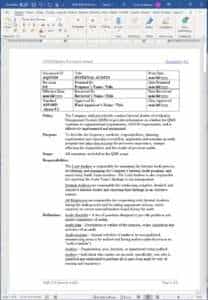
- AS9100 Internal Audit Program (Schedule)
- Aerospace Internal Audit Planning
- Conducting the AS9100 Internal Audit
- AS9100 Internal Audit Reporting
- AS9100 Internal Audit Follow-Up
Aerospace References
- AS9100:2016 Rev D, “Quality Management Systems – Audit Requirements for Aviation, Space, and Defense Organizations”, SAE International, Sept., 2016.
- AS9101:2016 Rev F, “Quality Management Systems – Requirements for Aviation, Space, and Defense Organizations”, SAE International, Oct., 2016.
- AS9100 Quality Procedures
- AQP1040 NONCONFORMITY AND CORRECTIVE ACTION
- AQP1060 MANAGEMENT REVIEW
- AQP1070 COMPETENCE AND AWARENESS
Internal Audits Procedure AS9100 Forms
- AS9100 Audit Schedule Form
- AS 9100 Audit Plan Form
- AS9100 Quality Audit Checklist Plan Form
- Final Aerospace Audit Report Form
- AS9100 Process Effectiveness Assessment Report (PEAR)
- Internal Audit file, including Audit Reports, objective evidence that could not be included in the Audit Report, and Audit Programs


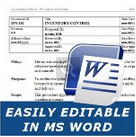
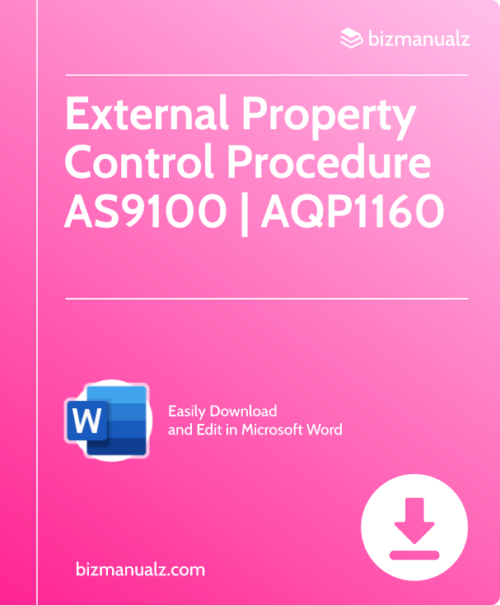
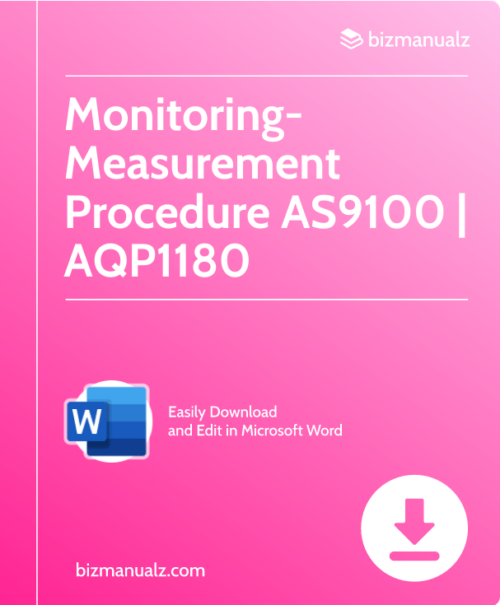
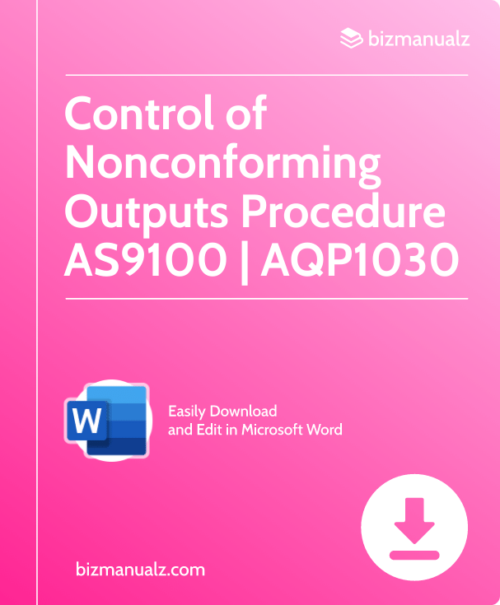
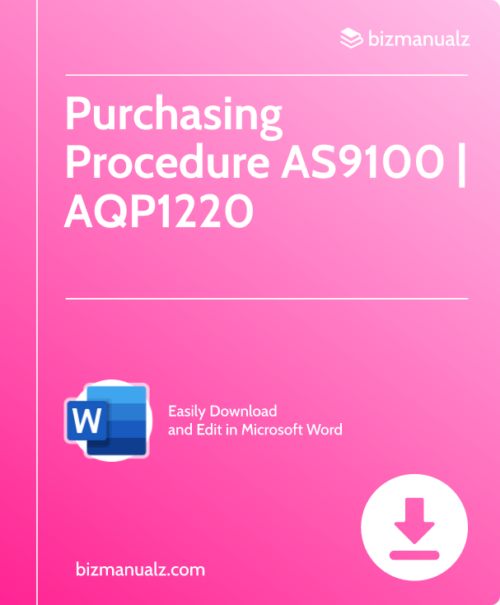













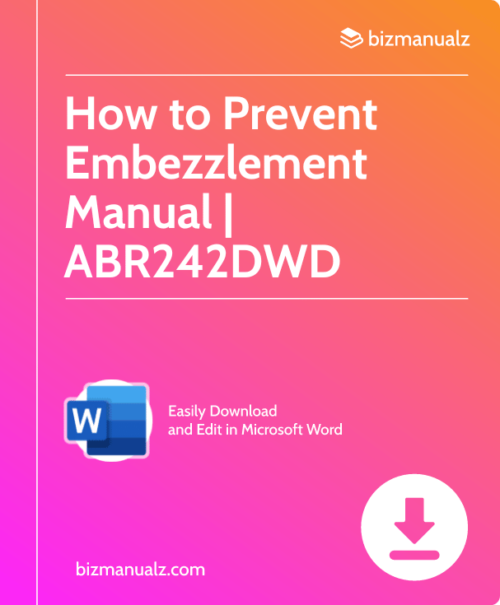
Reviews
There are no reviews yet.